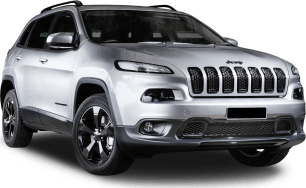Behind the wheel, the Mahindra XUV 3XO feels refreshingly old-school.
The 1.2-litre turbocharged petrol engine does seem like it would be underpowered, but in practice it’s completely adequate. Peak torque comes on tap from 1500rpm so it doesn’t have to work too hard at all.
It’s fun hearing the noise the three-banger makes when under the boil. You don’t hear it much though because the revs are typically kept down low to minimise fuel consumption.
The key reason why this car feels old-school is the six-speed torque-converter automatic transmission. It’s nice to not drive an affordable everyday car that doesn’t have a continuously variable transmission (CVT) or dual-clutch automatic transmission as these can suck the life out of a car or be jerky.
The gear shifts in the Mahindra are sometimes docile, but are smooth and measured. It just operates like a regular car that doesn’t require you to rewire your brain to drive.
There are three drive modes to choose from. They’re hilariously called ‘Zip’, ‘Zap’ and ‘Zoom’. These correspond to Eco, Normal and Sport, respectively.
While I did eventually get used to driving in the ‘Zap’ mode, it felt a little snoozy at points, taking a beat or two to get the car accelerating with traffic. You can sidestep this with ‘Zoom’ which feels much more lively. If you activate cruise control or restart the car, though, it defaults back to ‘Zap’.
The XUV 3XO makes the most sense in the city where you’re able to use its tiny exterior dimensions to navigate tight urban carparks and narrow laneways with ease.
It almost became a challenge for myself to find the smallest parking spot I could slot this car into. As standard on this AX7L there are front and rear parking sensors, as well as a surround-view camera system.
Where this car is let down, however, is the steering feel. It’s incredibly light at low speeds and then as the speed builds it gets very heavy. So much so it feels like I’m getting an arm workout.
Unlike some of its rivals, there is still a semblance of feel through the steering wheel, but this drastic change from light to heavy steering weight is too stark. Somewhere in the middle would be nice please.
Something Mahindra is very good at is developing a comfortable suspension tune and this car is no different. It can tackle pimply urban road imperfections and speed bumps with no problems whatsoever.
Out on the open road this car surprised me. It feels like a much larger car than it actually is and doesn’t get blown around in the lane like small cars can.
The three-cylinder turbo-petrol engine remains confident at higher speeds, though if you frequently travel up hills the fuel consumption will skyrocket. There’s also a bit of road noise, which is to be expected when a car is this small.
For the most part the suspension does a fantastic job at rounding out road imperfections, but bigger bumps or potholes can unsettle the car. It’s not helped by the larger 17-inch alloy wheels.
Out in the twisties this tiny SUV is fairly agile. It’s not the sportiest thing out there by a vast degree, but it remains planted and solid even when pushed into harder corners.
Lastly, another point that makes this car feel old-school is the lack of obtrusive bings and bongs from the safety systems.
Sure the parking sensors can be a little over-the-top and the traffic sign recognition takes over the entire digital instrument cluster when it picks up a new speed limit, but having no driver attention monitor and intelligent speed limit assist is refreshing.
It’s not all perfect however as the lane-keep assist is too hands on for my liking. It activates from 60km/h and is quite overt in how it directs the car through bends.






.png)